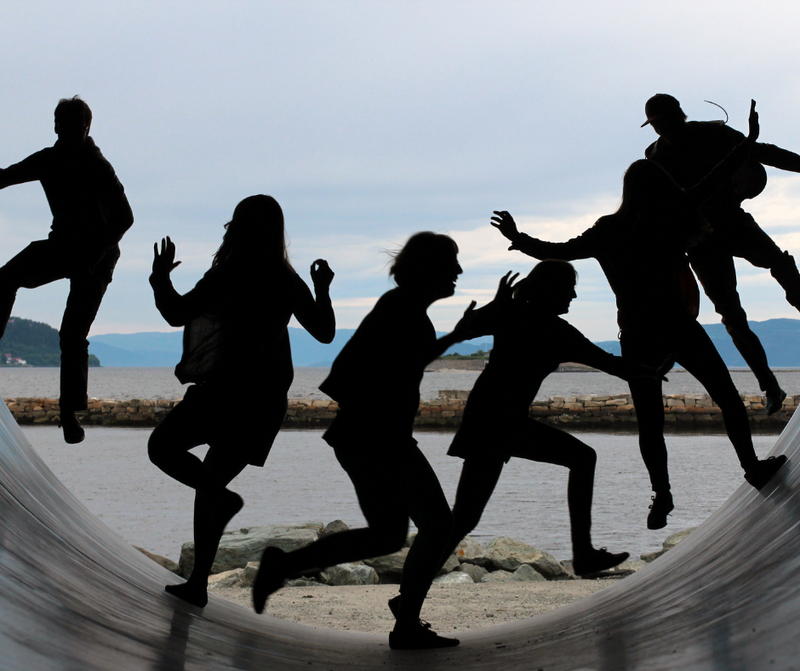How Movement Affects Your Brain, Your Creativity, & Your Mood

It’s no secret that most of us don’t get enough movement. The majority of Americans are typically in front of the computer working or relaxing on the couch watching Netflix.
But we were made to move. It’s part of who we are. It’s the movement of fluid in your veins, the movement of your fingers, wrists and arms as you complete daily tasks, the movement of your walk down the street as you head home after work.
Movement helps you get oxygen to your brain, improves mood and increases creativity. As we age, movement can become more challenging. That does not mean it has to be.
By developing a strong mind-body connection, we can use movement to defy aging and improve brain health, mood, and creativity.
The Benefits of Movement for Brain Health
One of the best predictors of your health in life is not how old you are, or how much you weigh, but how well you move.
According to the Journal of the American Medical Association, “People who tend to slouch, walk slowly, and stand with poor posture may have an increased risk for future disability and disease.”
Sitting long periods of time isn’t good for muscle health, which can lead to all kinds of problems down the road. But, sitting and staying still has negative effects past that. It can even affect your brain health.
When we think about nourishing our brains, we don't often associate it with movement. Yet the connection between movement and brain health is so strong that exercise has been called "miracle-gro for the brain."
The science of neuroplasticity is in its infancy, but we already know that our brain is shaped by our experiences. Our mental and physical health are intimately connected. When we make a single change to one, it has a ripple effect on the other.
This is why exercise can help lift your mood and increase your energy. In fact, one of the most common side effects of exercise is improved sleep — so much so that doctors often prescribe it as a treatment for insomnia.
You don't even have to do anything strenuous to reap the benefits. Activities like walking, stretching, or even just standing up more often can make a world of difference in how you feel. If you're looking for a quick brain boost, yoga and pilates engage both your mind and body.
Using Movement to Boost Creativity
Creativity and movement aren't usually thought of as being related, but they are strongly tied. Moving around helps you rearrange the pieces of a problem or project in a new way.
So if you're struggling with writer's block or a design challenge, take a break and move around for 10 minutes. Go for a walk, ride your bike, try yoga — you might just come up with the solution you've been looking for.
I often get my best ideas after I’ve been in my studio, especially after I’ve taken a little time to do free movement, often a mix of Pilates, yoga, and dance movements. Allowing time to enjoy a stream of consciousness type of flow gives me a sense of unplugging from the stresses of daily life.
It actually helps to see movement as a metaphor for how your mind works when you’re trying to be creative. When you’re in motion, your mind is more likely to have fluid thoughts that connect ideas together in new ways. When you are still, your mind tends to become rigid and gets stuck because it has fewer options and less flexibility.
If you want to be more creative, get into motion.
Improve your Mood through Movement
The next time you're feeling a little blah, try getting up and moving.
"Movement is required for happiness," says Kelly McGonigal, a health psychologist at Stanford University and author of The Willpower Instinct. "If you really want to be happy, you have to move your body."
Even just a little bit of movement can boost your mood and make you feel happy, she says. And if you move with a purpose — like running to catch a bus or intentionally connecting to your body in a pilates class — it can help you feel a stronger mind-body connection.
"It makes us feel more alive and engaged in the world," she says.
There is real science behind it. When you exercise your body produces endorphins which make you feel good. It's hard to feel sad or down when you are physically active and moving around with others. Endorphins are chemicals in the brain that act as natural painkillers and they can also improve the ability to sleep, which in turn reduces stress.
Movement is crucial for creating change, boosting creativity, and improving your mood.
Those amazing benefits are just a step away—literally and figuratively. So if you're looking for a happy medium between work, home, and gym (and who isn't?), there are endless ways to incorporate movement into your day-to-day life, such as simply turning on music that makes you dance as you do ordinary household chores. And once you start moving, you'll notice that it feels good to do so.
Jumpstart your at-home movement practice with a free 7-day trial to Sandvi Studio’s on-demand yoga, pilates, and movement training.



